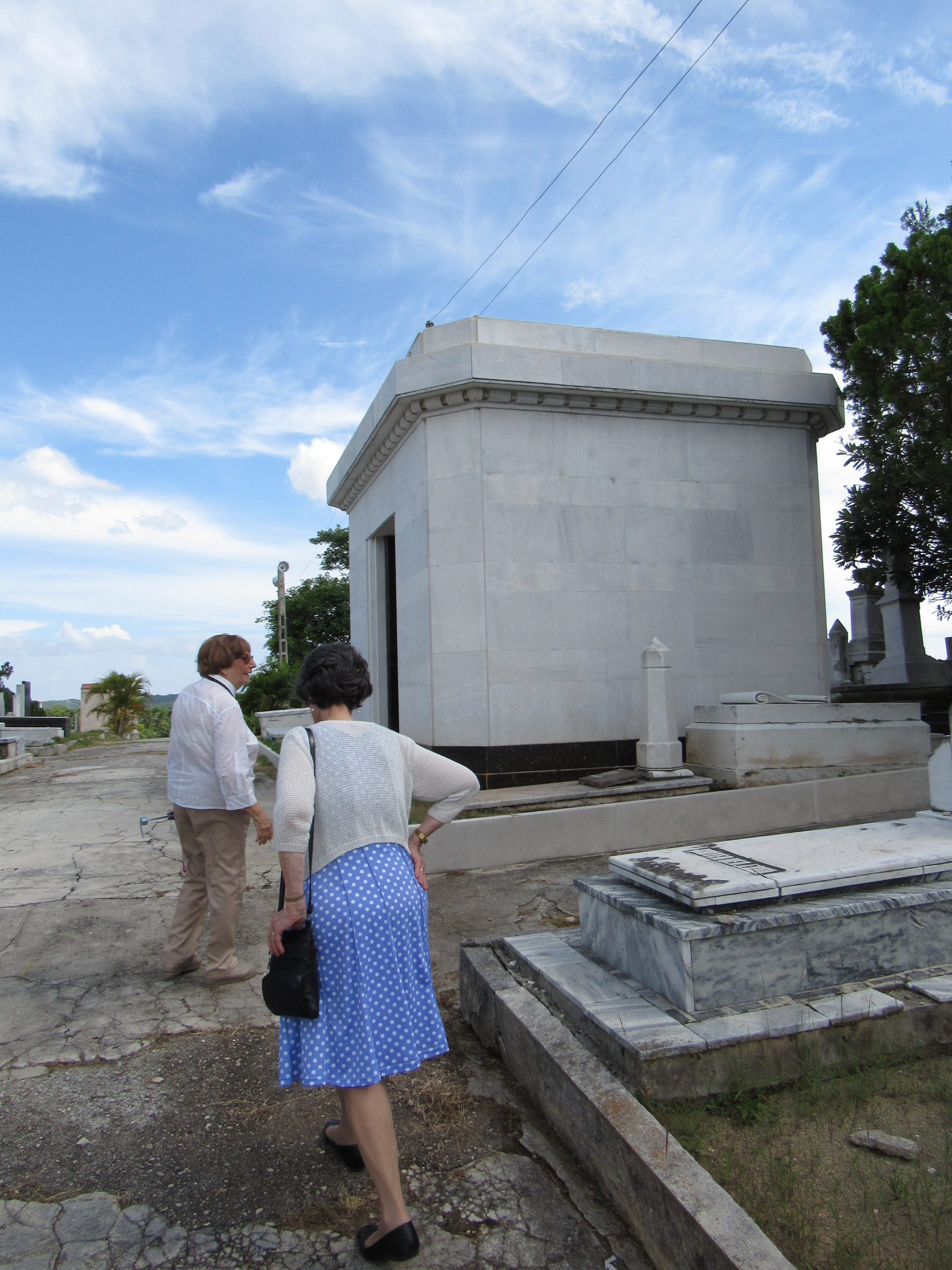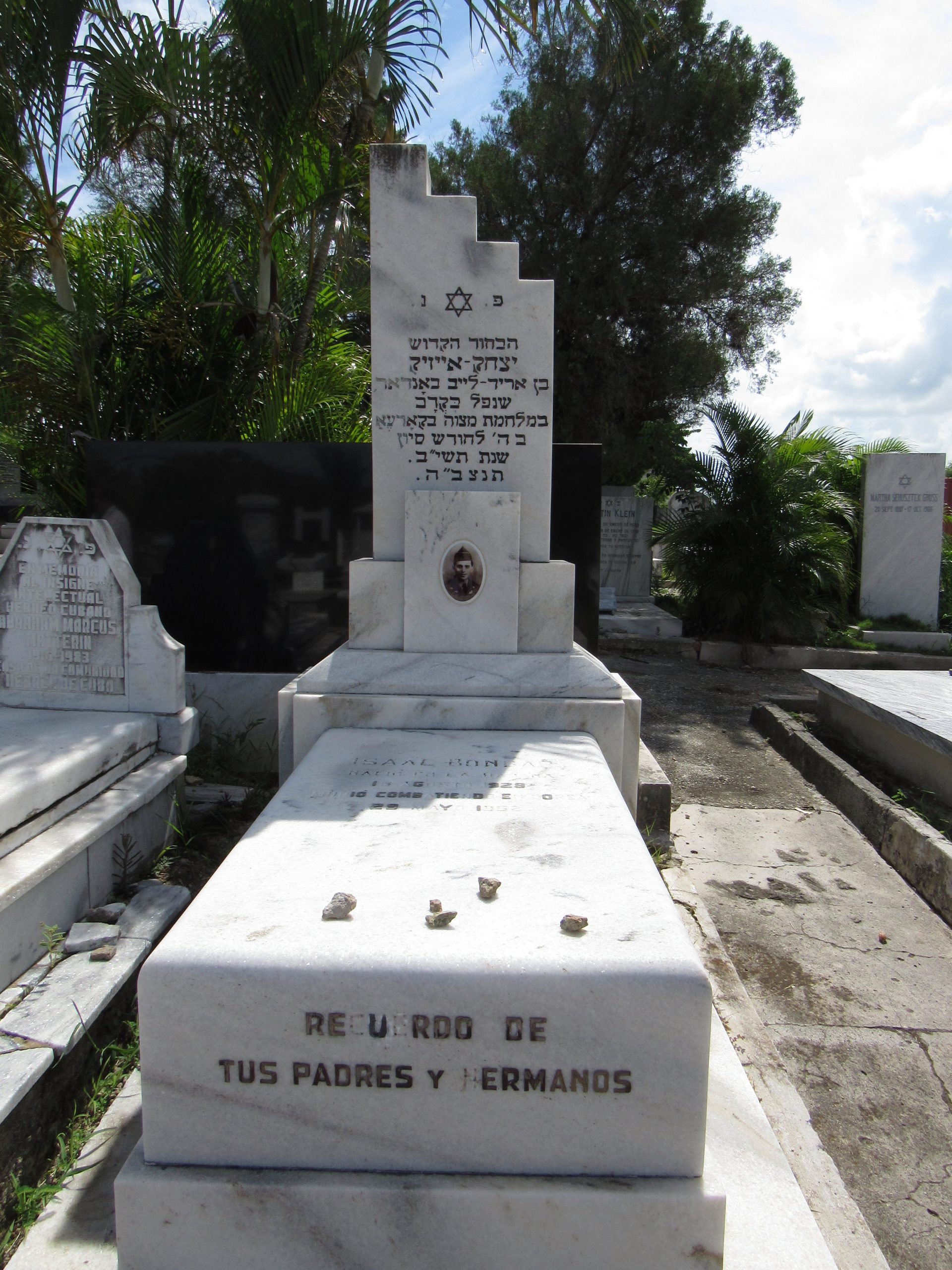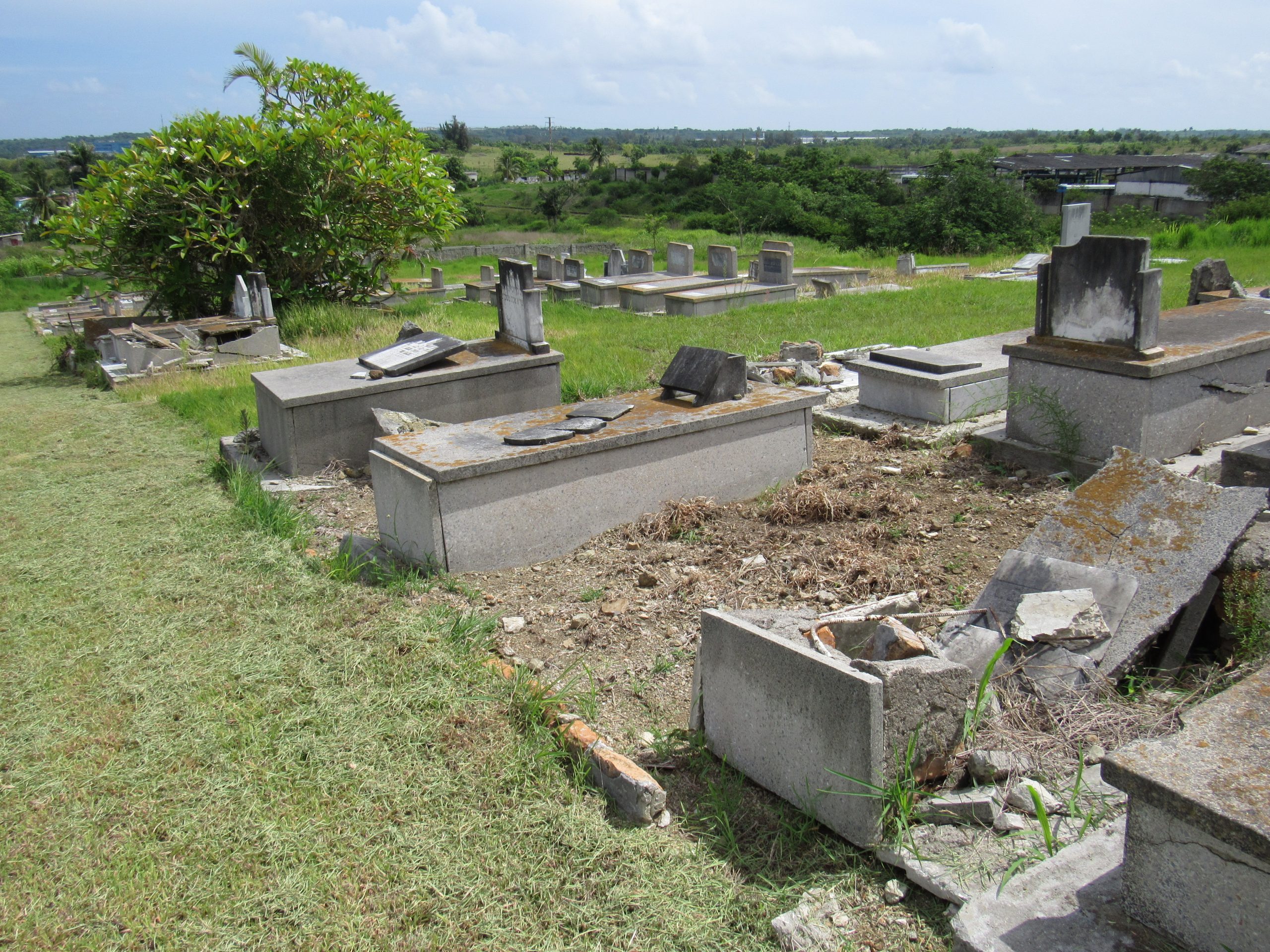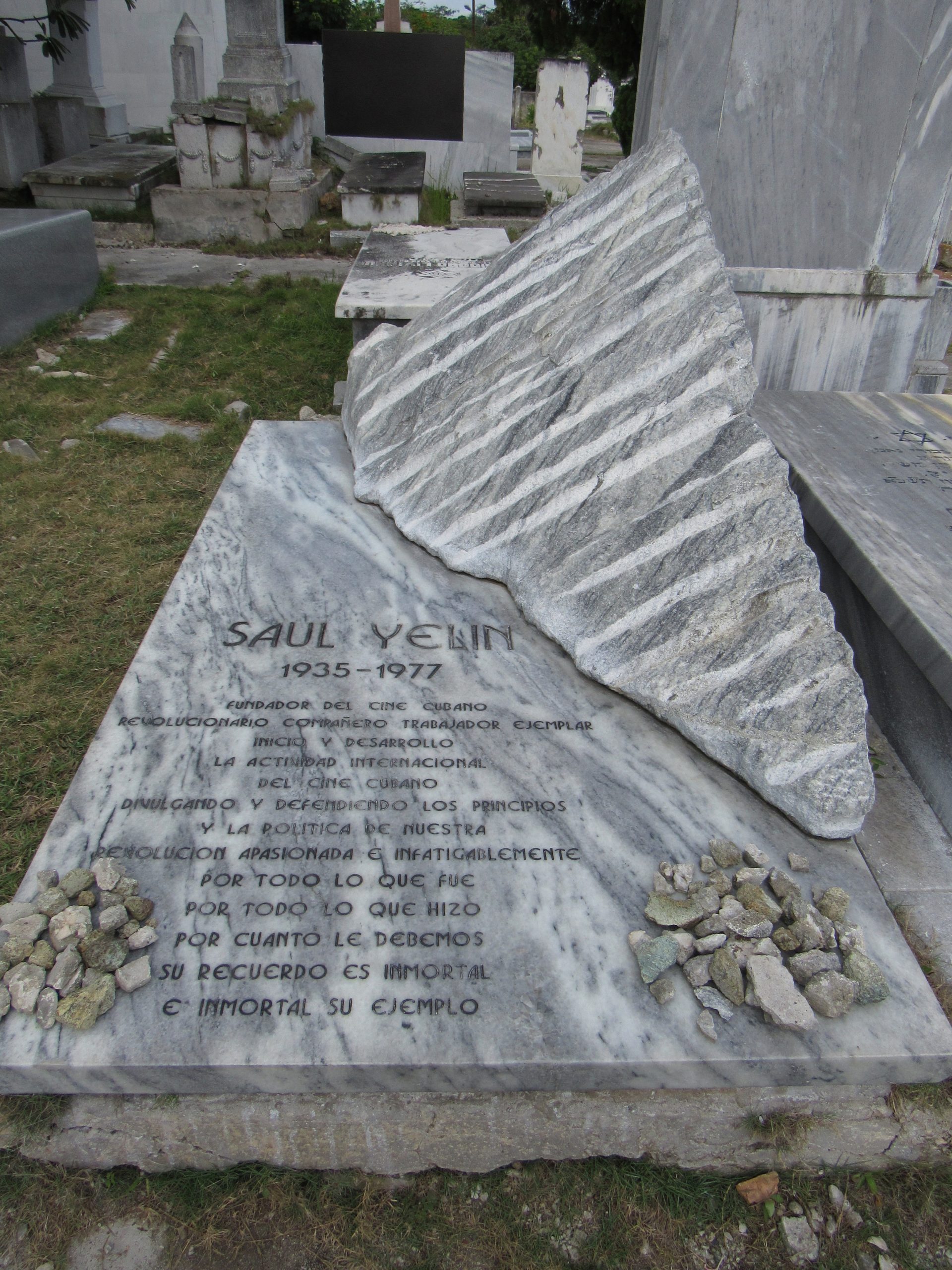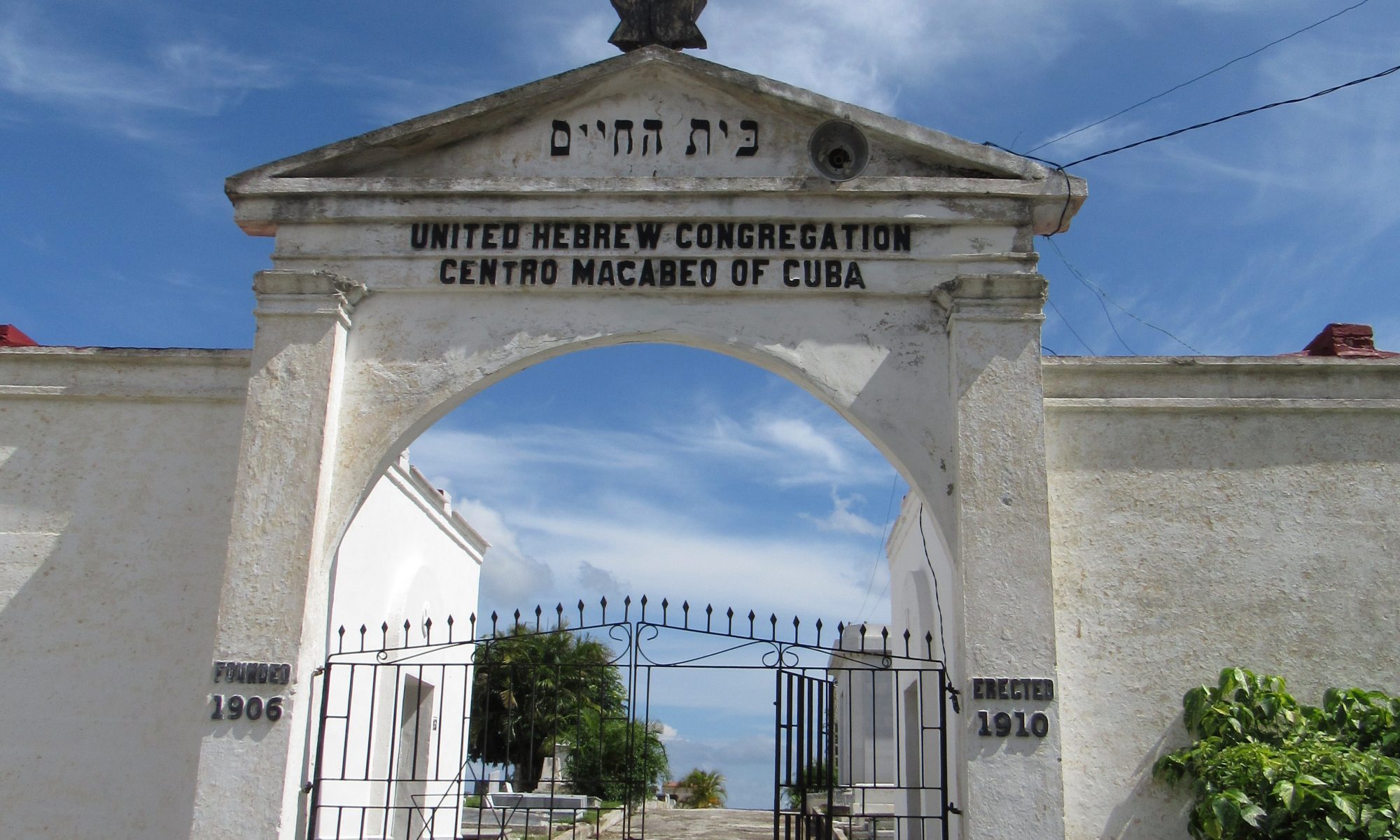From 2016-2018, Dean Judith Russell and I collaborated with Dr. Adela Dworkin, the President of El Patronato Synagogue and Jewish Life Center in Havana, to preserve, digitize and make public the tens of thousands of unique items in the Patronato’s library. Jewels included such items as a weekly newspaper, originally in Yiddish, of Jewish Cuban life and news that spanned the 1940s through the early 1960s (it closed when Communism ended the independent press). On one of our many visits, Dr. Dworkin led us on a tour of Cuba’s oldest Jewish cemetery, established in 1910, in Guanabacoa. Granted possibly the worst land available in a gesture of racial scorn, the cemetery lies on a hillside, making the graves susceptible to the worst kind of damage over the years. Still, while Dr. Dworkin and the Jewish community of Cuba await government intervention to restore the grave sites, many show signs of severe damage and loss. Yet the depth of love for family and community as well as the meaning of Jewish families’ sanctuary in Cuba during the height of persecution in Europe and Russia are clearly reflected in these tombs. Also striking are the piles of small stones, placed there by visitors to graves. In Jewish traditions, these have many meanings. However, as Adela explained to us, “placing a stone means we have been here. We have not forgotten. We will never forget the individual nor do we forget how they live on in us and through our actions for each other in the world.” (March 2018)
